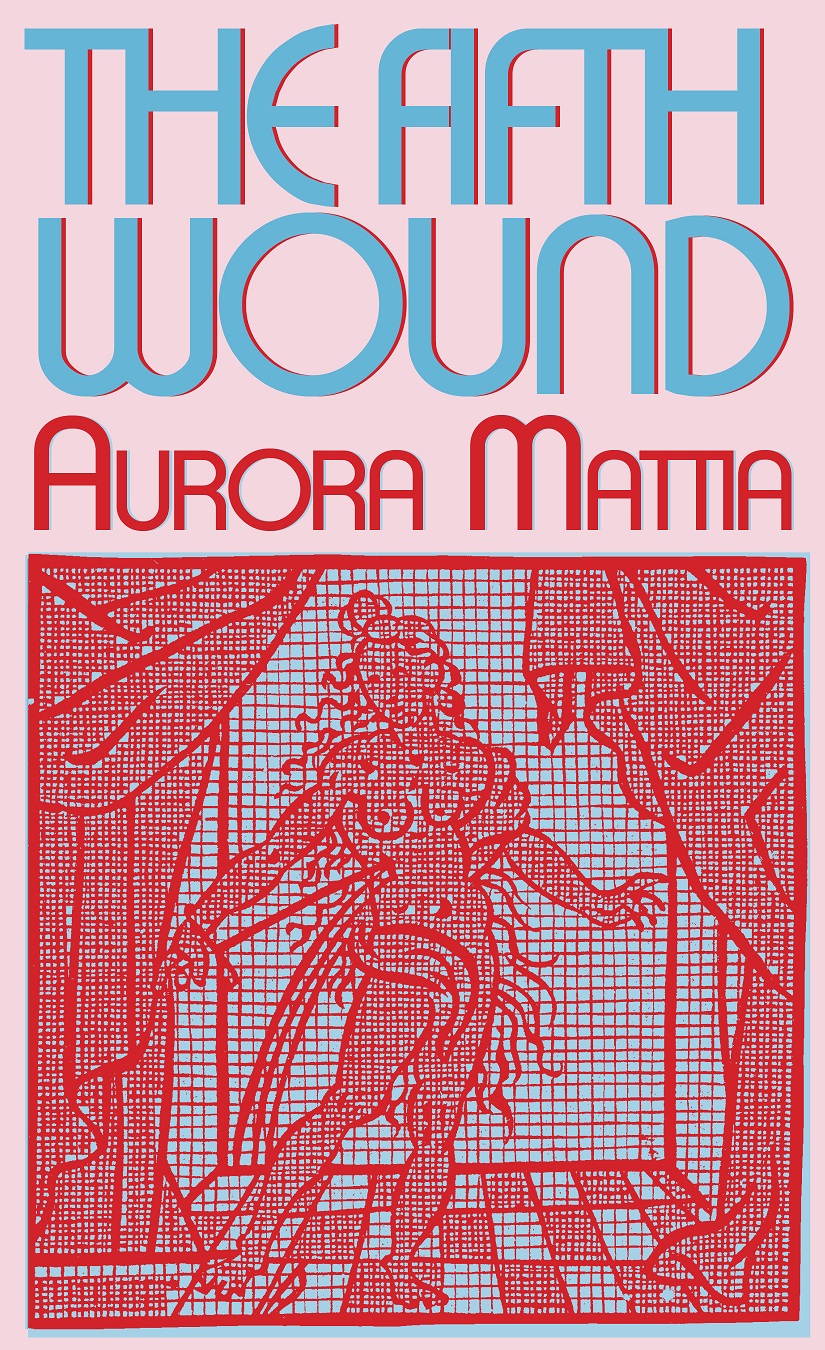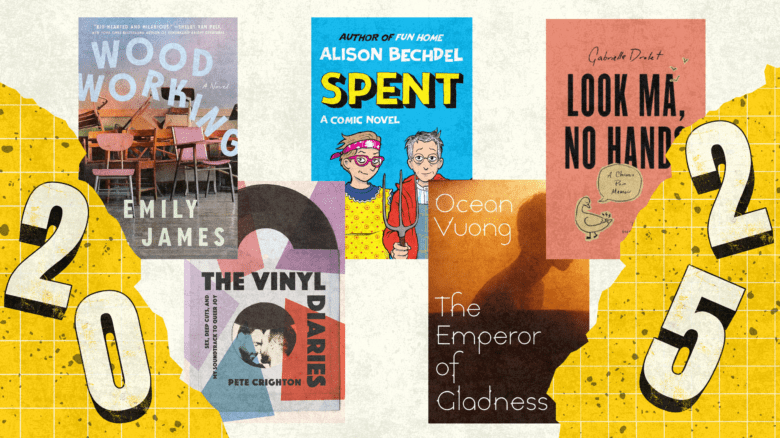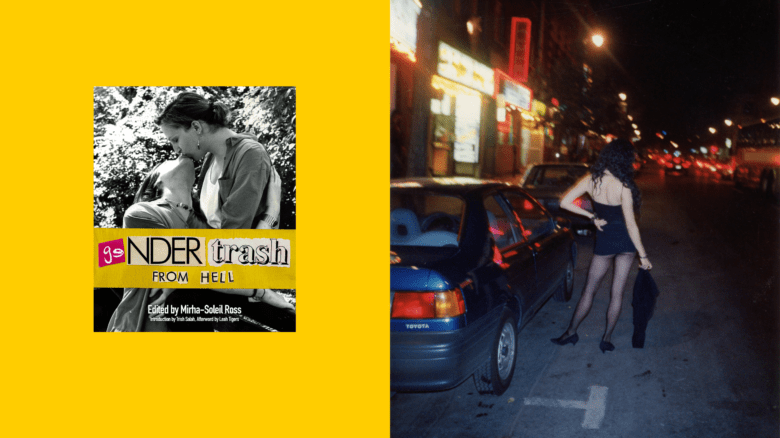Trans women have always been treated as sensational. Movies and TV shows in the 1990s like The Crying Game (1992) and Ace Ventura: Pet Detective (1994) were especially brutal when it came to the plot twist of “desired woman is actually trans instead of cis as previously assumed.”
Of course, this wasn’t just a problem of the ’90s. Even now, in movies and TV shows created by cis people, trans women are seen as scandalous, liars, criminals and murderers, but rarely as everyday women. But, going back decades, trans people have been able to find a venue to talk about their own experiences through literature, particularly in the form of memoir. The trans memoir was a genre first aimed at cis people, a way for trans people to defend their humanity and tell their own stories to the wider world. Christine Jorgensen’s A Personal Autobiography, published in 1967, is often cited as the first modern trans memoir. In the years after Jorgensen’s memoir, many of the memoirs written by trans people have reflected a similar desire: to show cis people that trans people are real humans, not scary monsters.
Cis interest in trans memoirs could be seen as cis readers’ desire to understand an experience outside their own. But considered in a less generous light, this desire to “know more” forces trans women to constantly prove their womanhood, provide “shocking” details, emphasize transition narratives and frame their experiences as being “born in the wrong body.” When discussing the genre in a Lit Hub article, Juliet Jacques, author of Trans: A Memoir, says “editors and other trans writers told me that ‘people weren’t interested’ in trans politics and they would only accept first-person ‘journey’ narratives.” While Jacques explains that “the transition memoir had fallen out of favour with trans writers” and that “plenty of writers in the 1990s and beyond found that this didn’t speak to them,” she still describes the pressure many trans writers receive from editors and publishers to write such narratives. Trans women are still trying to force their way out of this pigeonhole.

New York–based writer Aurora Mattia pushes against and toys with this industry pressure in her debut novel, The Fifth Wound. Published by Nightboat Press, it’s a roman à clef, a type of novel that obscures the identity of real people with invented names, straddling the line between fiction and non-fiction. Though some of the narrative might be based on real events, the epic love story between the characters Ezekiel and Aurora is convincingly fictionalized. Described as a “tale of multiple traumatic encounters with transphobic violence,” it’s an exploration of love and beauty, a mythical fantasy featuring time travel, medieval nuns and t4t romance. In some ways, this novel’s main feature is excess.
The main narrator of the novel is a writer named Aurora (in this review, we’ll call the character Aurora, the writer Mattia), who explicitly tells the reader that she doesn’t want to succumb to the pressures of writing a memoir. This feels at odds with Mattia’s online-famous persona, which has been a candid voice on Twitter (her account has been shuttered), and one that shares both her image and her stories on her OnlyFans. In fact, the author released a short story called “Ezekiel in the Snow,” on her OnlyFans, and that title character becomes the main love interest in The Fifth Wound. Readers of The Fifth Wound might be confused by this tension, between the “real” and the “fictional,” but that is exactly what I think Mattia is trying to do.
The novel’s intention is not only to confuse, but to make the reader question what is actually real. “Reality” and “realness” become two distinct concepts, with the former belonging to memoir, the latter to fiction, where it is a question of whether the experience touched the reader emotionally. Mattia uses highly imagistic prose to build a kind of “realness” that deepens the experience of the reader through the genuineness of the heightened relationships of the characters. This hyperemotionality takes the reader on a fantastic journey that will leave them hopeful, sad and wrecked—in the possible best way. There is even physical wreckage, when Aurora gets stabbed in the eye on the New York subway, giving her what she calls her “fifth wound.”
Moments that felt real to me, beyond questions of whether they really happened, were moments of connection between the characters. When Aurora gets too lost in myth and fantasy, it is her ex, best friend and roommate (could this book get any gayer?) Noel, who keeps her grounded in reality. Yet it’s on the page where she is able to hide, to explore, to fantasize and to mould her life into whatever she wants, even when reality comes knocking. “In the shadow of me narrating my life profusely as if my voice were impregnable and rolling like tides across the pages, Noel has secretly been axing poultices to my wounds, wrapping my limbs in bandages, scrubbing my blood from the floor, wringing it from my blouses and underwear, collecting blades and shatters of glass from my hiding places, removing bottles of liquor from my bedroom, absorbing my screams, singing along with my sudden melodies, holding my hand in ambulances on the way to Woodhull: When an event happens to one person, it reverberates along the ply of her affections.”
“How to help your friend through their mental health issues when nothing ever seems to change? Noel eventually ends the friendship. Though saddened, Aurora can’t help but understand.”
While Noel is one of her tethers to real life, they resent being a caretaker. After several instances of self-harm by Aurora, Noel finally tells her, “Please call your mother…. I can’t do this alone.” The tension and love between them feels so tender, a complicated t4t ever-changing love. It’s a relationship I found quite heartbreaking and true to life because it displayed something many queer and mentally ill people come up against: how to help your friend through their mental health issues when you feel you’re at it alone and nothing ever seems to change? Noel eventually ends the friendship. Though saddened, Aurora can’t help but understand.
At other times in the novel, Mattia throws the reader into another “real” dimension through irony and humour. During a particularly intense scene where she’s seeking medical attention for a vaginal injury (a man she meets on an online dating app thrusts too hard and deep into her cunt while they were having sex), she comes up against the absurdity of the hospital staff not realizing she’s trans. While annoyed, she also playfully wonders why they don’t believe her, declaring, “maybe they were dazzled by the splendor of my cunt.” They keep asking her if her flow is usually this heavy, and when she last had her period. Time after time, she tells the doctors and nurses that she’s trans and they can’t imagine it, can’t see her, ignoring her problem. She’s made to suffer, howling in pain for hours.
Though the detailed recounting of this moment feels like the closest to traditional memoir, Mattia snatches the narrative back with laughter. The chapter ends with her sighing angrily and comically, “I just wanted a doctor who I didn’t have to teach. In between moans, I was giving a talk on the state of the transsexual.”
“It is intentionally severing a storyteller from the scraps and monuments of myth and makeup, book and fuck, melody and scream that have contaminated and therefore communalized her idiom, in order to neutralize, while pretending to emphasize.”
Conversely, the book’s main romantic relationship, between Aurora and Ezekiel, is extremely heady and up in the clouds. In being so, it loses some of its impact, that “realness.” During the first two-thirds of the novel, Ezekiel is the muse Aurora writes to, the one who got away. The ethereality of the connection makes it difficult to understand what draws them together, and their love story becomes a little flat. At first, it seems like Mattia intends the relationship to be a mythological, metaphorical representation of unfulfilled desire, given we only get Ezekiel’s words through an Aurora filter, making him less of a person, and more of a memory. However, closer to the end of the book, she and Ezekiel reconnect, and the reader’s expectations are once again thrown; we get actual encounters between them that feel real and alive and he ends up speaking for himself, in the present. Unfortunately, I wasn’t invested in Ezekiel as a reader by the time he became a “real” person, which made it hard to feel the pangs and excitement of his and Aurora’s connection.
Yet Mattia’s love of queer community and other writers and creators feels genuine and alive. Mattia joins a long line of queer storytellers, being part of a community that gossips with and about each other, that collectively grieves and mourns. She pushes against the idea that the writer is a loner, a straight white cis and middle/upper-class man working on his own without outside influence. Completely the opposite, Mattia’s book lets everything in, whether it be Greek mythology, the Kardashians, the late folk musician Townes Van Zandt (whose lyrics she often quotes) or Sappho. For both Mattia and Aurora, writing is formed through relationships, in person or through books, a notion that pushes against the capitalist marketing schemes of the publishing industry.
Through Aurora, Mattia rails against the instincts of publishers: “[W]hen the Algorithm says this book is like nothing you’ve ever read,” she proclaims, “it is intentionally severing a storyteller from the scraps and monuments of myth and makeup, book and fuck, melody and scream that have contaminated and therefore communalized her idiom, in order to neutralize, while pretending to emphasize.” The book ultimately contends with the choice to write within and against the limitations created by the publishing industry. When Aurora asks herself the question of what the point of writing is, she replies, “There are too many events to weave into the constellation of my life-shroud, too many events and only so much meaning, so I’m writing this book of wounds, of events outpacing meaning, and I hope it can help you survive, otherwise what’s the use? Otherwise, by my speaking, I’m just offering my particulars like the contents of my purse. Otherwise, I’m just giving away more raw data to Empire.”
In its most compelling and honest moments, The Fifth Wound reads as a love letter to other trans writers, particularly trans women, to the queers both past, present and future, who have made writing important for the author.


 Why you can trust Xtra
Why you can trust Xtra


